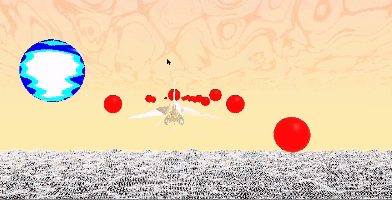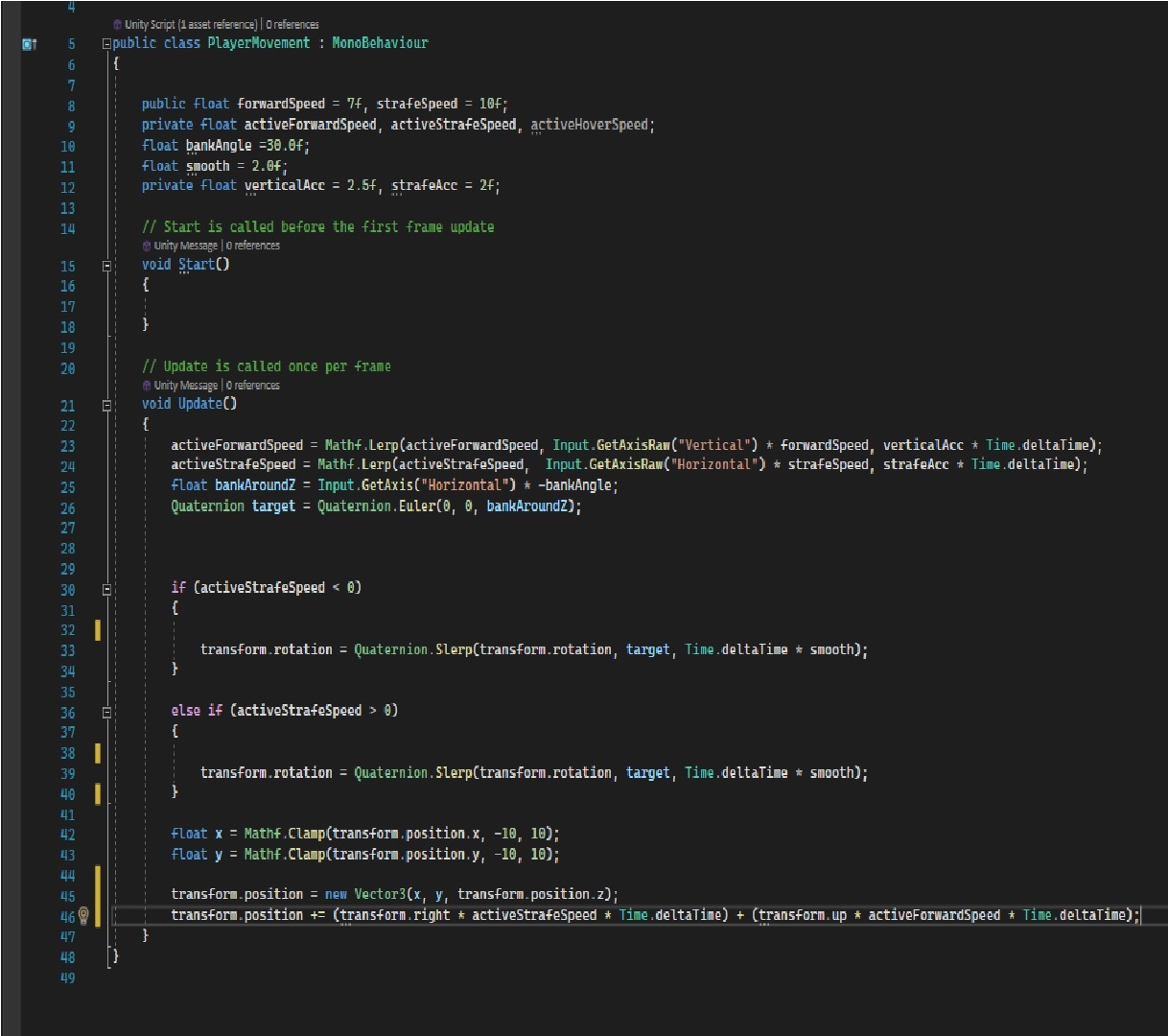To the horizon demoo
Worked in a team of three programmers. Each of us tackled different tasks. I Was the primary programmer working on the core mechanics of player movement. I also worked on obstacle generation. The game was a demo to showcase variation in mechanics.
3 / 3

Gameplay
-
Designed and implemented core player movement, including **free X-Y movement, forward motion, and banking mechanics** for an immersive flight experience.
- Collaborated with the team to define **player movement constraints**, allowing free movement on the X-Y plane while maintaining a fixed velocity on the Z-axis.
- Implemented **top-down movement** by interpolating between forward speed and vertical input using vertical acceleration per frame, ensuring smooth responsiveness.
- Developed **strafing mechanics** by interpolating between strafe speed and horizontal input, applying horizontal acceleration over time for fluid lateral movement.
- Calculated **final player position** by summing the up and right transformations, ensuring real-time positional updates while clamping X and Y values to keep the player within screen bounds.
- Engineered **dynamic banking mechanics**, where the bank angle is determined by **horizontal input and applied via Quaternion rotations**. The system interpolates between the current and target rotation per frame, ensuring smooth transitions.

-
Implemented procedural obstacle generation with randomized spawn positions, requiring players to dynamically dodge obstacles while flying forward.
- Designed a **tile-based spawning system**, where obstacles are instantiated relative to designated ground tile markers.
- Configured each ground tile with **three predefined spawn points** (left, right, center) and an additional spawn point for procedural level extension.
- Used **randomized number generation** to determine which spawn point would instantiate an obstacle, ensuring varied and unpredictable gameplay challenges.
- Integrated a **box collider trigger system** on each tile—when the player exits the collider, the script dynamically spawns the next ground tile at the designated spawn point.

Player Controller & Flying Mechanics
Obstacle AI Programming
- © Untitled
- Design: HTML5 UP